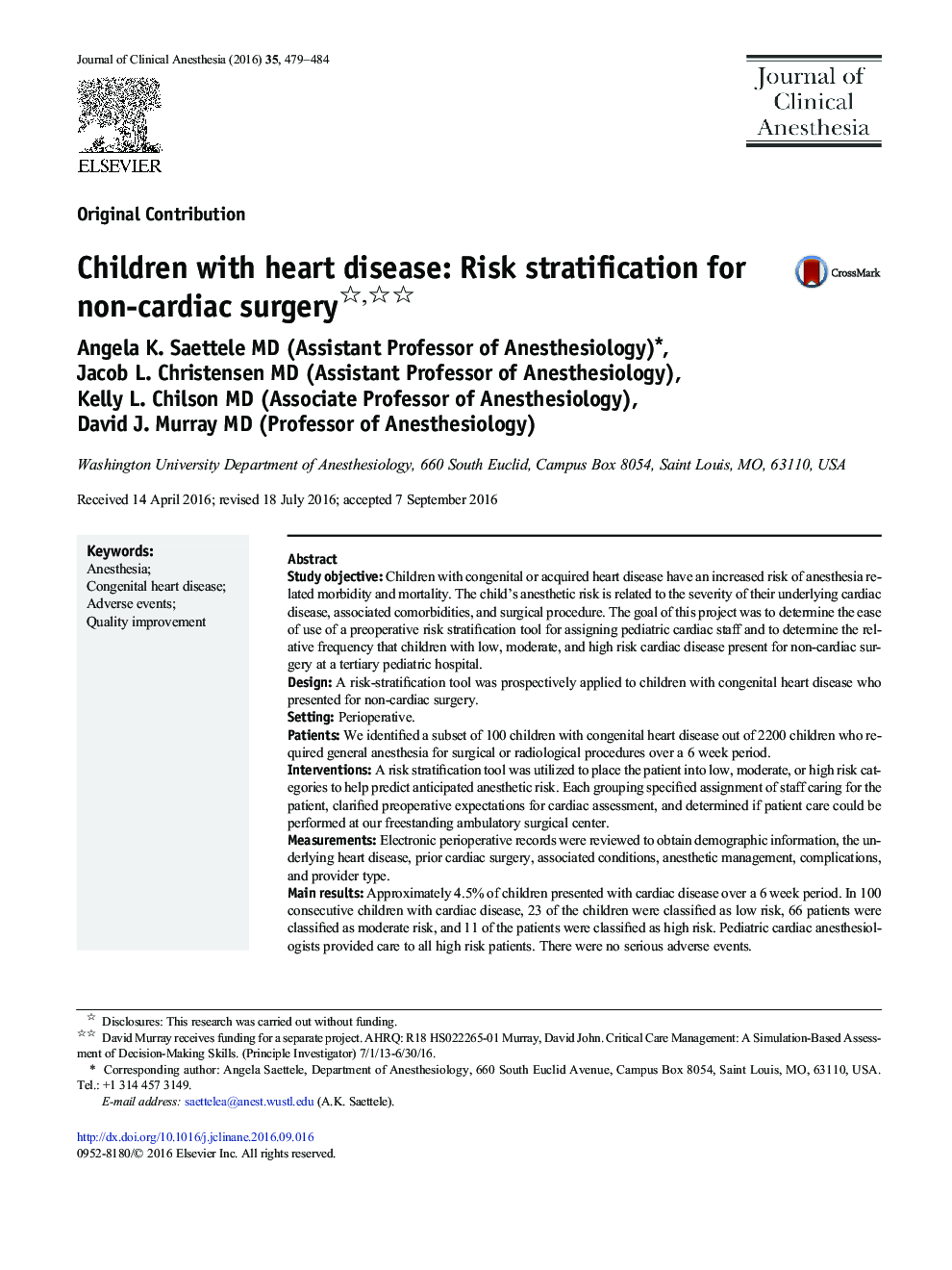| کد مقاله | کد نشریه | سال انتشار | مقاله انگلیسی | نسخه تمام متن |
|---|---|---|---|---|
| 5884336 | 1567655 | 2016 | 6 صفحه PDF | دانلود رایگان |
- A child with congenital heart disease has a higher risk of anesthetic complications.
- A preoperative risk stratification system is proposed to define anticipated risk.
- Preoperative planning can help optimize the perioperative period.
- Anesthetic staffing can be assigned based on that anticipated risk.
Study objectiveChildren with congenital or acquired heart disease have an increased risk of anesthesia related morbidity and mortality. The child's anesthetic risk is related to the severity of their underlying cardiac disease, associated comorbidities, and surgical procedure. The goal of this project was to determine the ease of use of a preoperative risk stratification tool for assigning pediatric cardiac staff and to determine the relative frequency that children with low, moderate, and high risk cardiac disease present for non-cardiac surgery at a tertiary pediatric hospital.DesignA risk-stratification tool was prospectively applied to children with congenital heart disease who presented for non-cardiac surgery.SettingPerioperative.PatientsWe identified a subset of 100 children with congenital heart disease out of 2200 children who required general anesthesia for surgical or radiological procedures over a 6 week period.InterventionsA risk stratification tool was utilized to place the patient into low, moderate, or high risk categories to help predict anticipated anesthetic risk. Each grouping specified assignment of staff caring for the patient, clarified preoperative expectations for cardiac assessment, and determined if patient care could be performed at our freestanding ambulatory surgical center.MeasurementsElectronic perioperative records were reviewed to obtain demographic information, the underlying heart disease, prior cardiac surgery, associated conditions, anesthetic management, complications, and provider type.Main resultsApproximately 4.5% of children presented with cardiac disease over a 6 week period. In 100 consecutive children with cardiac disease, 23 of the children were classified as low risk, 66 patients were classified as moderate risk, and 11 of the patients were classified as high risk. Pediatric cardiac anesthesiologists provided care to all high risk patients. There were no serious adverse events.ConclusionsWe found this risk stratification method an effective method to differentiate children into low, moderate, and high risk categories for anesthesia planning and management.
Journal: Journal of Clinical Anesthesia - Volume 35, December 2016, Pages 479-484
